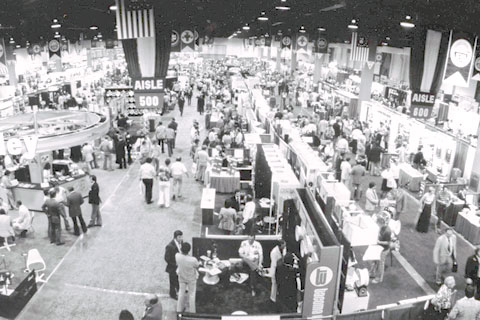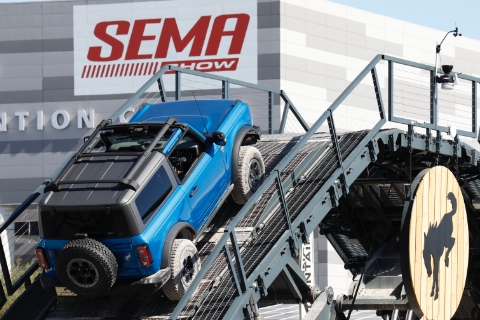SEMA News - December 2009
By Alysha Webb
 |
| The internal-combustion engine will still be the dominant powertrain technology for quite a while. |
Actually, however, the best of times for some specialty-equipment companies is yet to come. The internal-combustion engine will still be the dominant powertrain technology for quite a while. Aftermarket firms can continue to benefit from demand for products to make the internal-combustion engine increasingly more fuel efficient.
Meanwhile, alternative powertrains are grabbing greater market share and offer a myriad of business opportunities for SEMA companies as well. A landmark study conducted by the Center for Automotive Research (CAR) and commissioned by SEMA noted this and other powertrain trends. The study, titled “Powertrain Forecast and Analysis: What Is Coming and What Are the Implications for the Specialty-Equipment and Performance Aftermarket Industry?”—aims to help SEMA members capitalize on today’s opportunities and plan for the future. And the future is very promising for SEMA members, said John Waraniak, SEMA’s vice president of vehicle technology.
“Niche markets are where SEMA members excel,” he said. “Markets are fragmenting into smaller segments, and automakers are building more models off of fewer platforms, so customization and personalization matter even more. Cost-effective lower-volume production business models leverage SEMA members’ strengths and capabilities. The future of vehicle electrification is fusing with the golden age of the internal-combustion engine, and that spells opportunities for today’s motorheads as well as tomorrow’s.”
There are certainly risks but even greater rewards, Waraniak noted. The biggest risk is introducing a technology that doesn’t meet consumer and marketplace expectations. (Think GM and its diesel engine in the late-’70s or the Honda Accord HEV.) There is also the risk of choosing the wrong technology or one with a short market life.
SEMA companies are innovative, quick, small and nimble. They have the agility to build low volumes profitably and move in and out of new markets more quickly, said Waraniak. That will help them to succeed in the changing powertrain landscape.
“Green performance is one of fastest-growing segments in the specialty-equipment and performance aftermarket industry,” he said. “The new generation of clean diesels, hybrid powertrains, extended-range and pure electric vehicles represent blank canvases for SEMA-member companies.”
The Making Green Cool Zone (MGCZ) at the 2009 SEMA Show displayed the most innovative vehicles, products and people working to accelerate the adoption and commercialization of alternative powertrains, new technologies and continued improvements in the next generation of direct injection and turbocharged gasoline engines. SEMA is dedicated to keeping members informed about the latest vehicle technology opportunities, challenges and solutions associated with high-performance engineering, energy efficiency and demonstrating that horsepower and green power can coexist without sacrificing the cool factor.
And no matter what the technology, there will always be ways to enhance performance, said Gale Banks, founder and president of Banks Power in Azusa, California. Looking to the past is not an option, he warned.
“You can deal in retro tech or future tech,” said Banks, a SEMA Board member. “Retro tech is a dying business opportunity.”
From gasoline direct injection to plug-in electric, Banks sees a common denominator in future powertrains: the electronics and software that control the mechanical devices.
“Get some electronics background or form an alliance with someone who has one,” Banks advised.
Gasoline Engine Dominance Will Diminish, But It Ain’t Going Away
The SEMA-CAR report surveyed 17 powertrain industry experts. All survey questions were asked in reference to U.S. light-duty vehicles with a gross vehicle weight under 8,500 lbs. Two time points—2011 and 2015—were included, as were two gasoline price scenarios—$2.50 per gallon and $6 per gallon.
The experts agreed that despite all the talk of vehicle electrification, gasoline engines will continue to have the greatest market share in 2015, even with gas at $6 a gallon. But stiffer Corporate Average Fuel Economy (CAFE) and emissions requirements will create business opportunities for technology, such as turbocharging, that improves gasoline engine efficiency and boosts power, the report said.
SEMA member and turbocharger manufacturer BorgWarner of Auburn Hills, Michigan, predicted that 15% of all of North America’s light-vehicle gasoline engines will be turbocharged by 2015, up from 10% today.
“In order to achieve the [required] fuel efficiency, we will have to have smaller engines with more power,” said Tom Grissom, BorgWarner’s director of business development for turbo emissions. “The most efficient way to significantly increase power output is through turbocharging, which allows for engine downsizing and reduced fuel consumption while maintaining performance.”
BorgWarner supplies turbochargers to both the aftermarket (with its AirWerks brand) and to automakers, such as Ford Motor Co., which the automaker is using to turbocharge its Ecoboost engines.
Gasoline direct-injection (GDI) technology is also seen as a big beneficiary of rising fuel prices and stiffer government regulations. The CAR report predicted that 15% of gasoline engines will have direct injection if gas rises to $6 a gallon.
“GDI engines are inherently compatible with turbochargers,” said Grissom.
Electrification Equals SEMA Opportunity
 |
| Electric vehicles—including hybrids, plug-in electric and all other types—could grab nearly 30% of the powertrain market by 2015 if gas prices hit $6, the CAR report forecasted. |
The electrification trend is allowing smaller, faster, entrepreneurial companies to compete with the industry giants, at least in the short run. Take Lithium-ion battery manufacturer and SEMA member A123 Systems of Watertown, Massachusetts. The small company didn’t comment for this story because it was preparing for a stock-market listing, but according to its Securities and Exchange filing, A123’s revenue in 2007, the most recent full-year data available, was $41.3 million, up from $749,000 at the end of 2005.
The filing documents also illustrate the risks of the new technologies. An example from the “Risk Factors” section: “Rapid and ongoing changes in technology and product standards could quickly render our products less competitive or even obsolete if we fail to continue to improve the performance of our battery chemistry and systems.”
Of course, that need for continual improvement and commercialization of these technologies offers new and exciting business opportunities for SEMA members, Waraniak noted.
“Find a problem, and fix it,” he advised, whether it be cooling the battery, controlling it, increasing its performance or a myriad of other issues.
Diesel Still Has Legs
 |
|
Environmental awareness and efficiency meet tire-shredding performance: Galpin Auto Sports’ ‘65 Impala with 6.5L Duramax bio-diesel conversion in the Making Green Cool Zone at the 2008 SEMA Show. |
“We need to rely on all solutions to reach the CAFE targets,” said Ullrich.
The SEMA-CAR report predicted that there will be a niche for diesel technology applications in pickup trucks, large SUVs and CUVs. SEMA members are well positioned to take advantage of that niche, said Ullrich.
“They have the technology in their portfolio because the pickup is such a large market in the United States,” he said. “It’s not a radical change; it’s a migration compared to electrification.”
It’s All About Efficiency
The SEMA-CAR report includes input from traditional manufacturers. But SEMA members should also consider developing accessories for some of the new non-traditional companies, such as H-Line Conversions, and start-up car manufacturers, such as V Vehicle Car Company of Monroe, Louisiana, said Waraniak.
“If you aren’t selling much to existing or declining vehicle markets, shift part of your development efforts and product portfolio to the emerging vehicle markets with these new companies,” he said.
V Vehicle aims to produce high-volume, low-cost, environmentally correct cars. It has been quite secretive about exactly what technology that car will use, however.
H-Line’s Johnathan Goodwin, whose friend and partner, musician Neil Young, recently dubbed him the Motorhead Messiah in his latest video release, advised SEMA members to look for ways for their products or services to make vehicles more efficient and environmentally friendly and then emphasize efficiency and environmental friendliness as well as performance in their advertising.
“Not more horsepower; more miles per gallon plus extra horsepower,” he added. And don’t fixate on one powertrain technology.
“There is no one end solution,” Goodwin said. “Creating efficiency is where the core focus is.”
Additional details of the SEMA-CAR Report were provided at the “Driving Green: MPH+ MPGe” Vehicle Technology Briefing SuperSession during the SEMA Show. The panelists were Justin Ward, Toyota Technical Center; Dan Kapp, Ford Motor Co.; Johnathan Goodwin; Beau Boeckmann, Galpin Auto Sports; Ric Fulop, A123 Systems; Dean Tomazic, FEV Inc.; Gale Banks, Banks Power; Eric Cahill, Progressive Insurance Automotive X Prize; Azhar Hussain, TXGP eGrandPrix.
A media briefing in the Making Green Cool Zone at the SEMA Show immediately followed the seminar and offered SEMA members the opportunity to network with the speakers. Access the SEMA-CAR Report.



